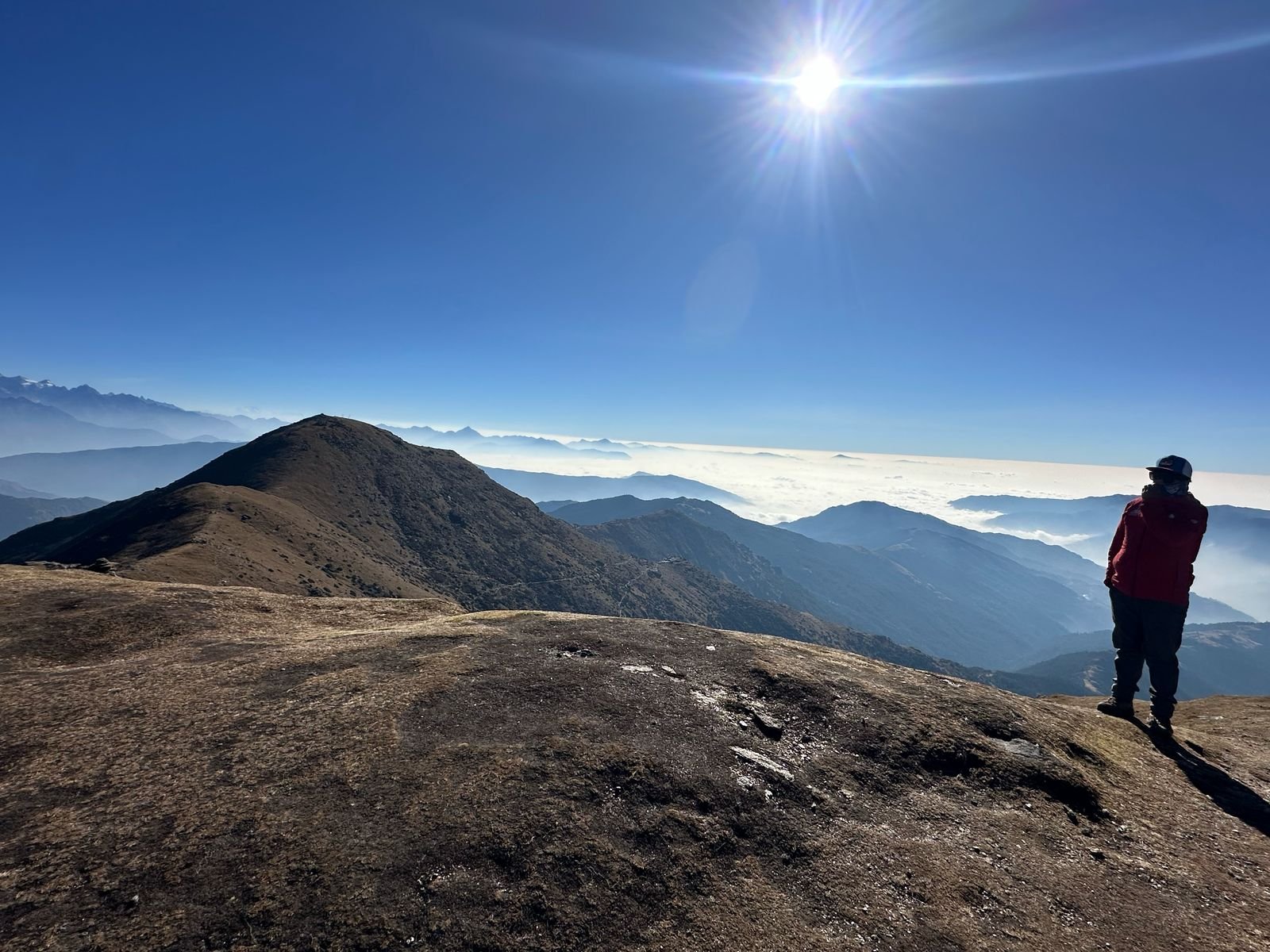10 world heritage sites of Nepal listed in UNESCO
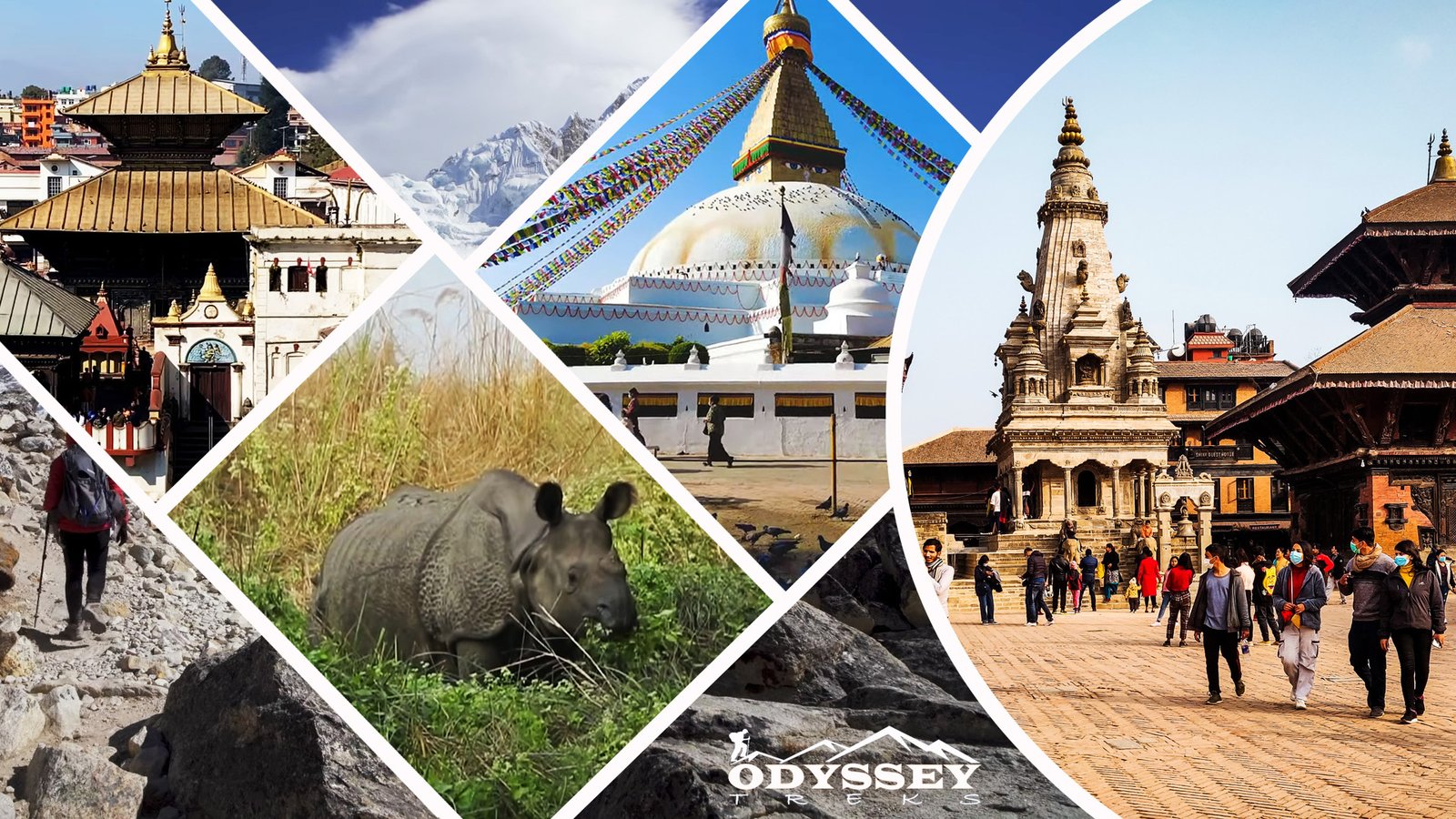
10 world heritage sites of Nepal listed in UNESCO
World heritage sites of Nepal listed in UNESCO are the center of attraction for tourists. UNESCO World Heritage Sites are places of cultural, historical, or natural importance that are considered to be of great value to humanity. These sites are designated by the United Nations Educational, Scientific and Cultural Organization (UNESCO).
There are now more than 1,100 UNESCO World Heritage Sites in more than 160 countries around the world. These sites represent the most important cultural and natural treasures that have been preserved and preserved for future generations to appreciate and learn from. Nepal is also home to some notable UNESCO World Heritage Sites.
The country’s heritage sites vary from natural wonders to magnificent cultural landmarks. These landmarks are so beautiful that show the rich cultural and natural dimension of Nepal which is truly awe-inspiring. Nepal’s World Heritage Sites represent the country’s unique culture and history, offering visitors the opportunity to experience and learn about rich traditions and customs.
UNESCO has included 10 historical sites of Nepal in the World Heritage List. Out of 10, 8 are cultural heritage sites with centuries-long historical backgrounds and 2 are natural heritage sites. These incredible heritage sites attract thousands of nature, history, and culture lovers every year. Here is an overview world heritage sites of Nepal.
Kathmandu Durbar Square
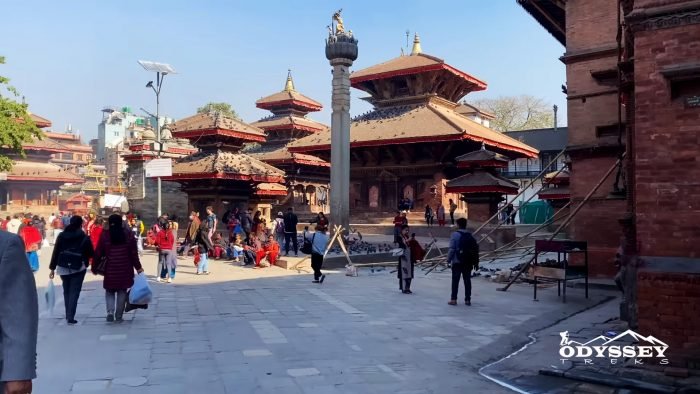
Kathmandu Durbar Square is one of the world heritage sites of Nepal listed by UNESCO. It is also known as Hanumandhoka Durbar Square. Located in the heart of Kathmandu, this area is close to the tourist center Thamel. Kathmandu Durbar Square is one of the most important cultural and historical places in the country it is a must-visit for tourists who want to explore the rich heritage of Nepal.
The site has a long and fascinating history of the Malla and Shah dynasties that ruled Nepal from the 12th century to the 18th century. Built-in the 12th century, the square was originally the site of the royal palace of the Malla dynasty. There are old palaces, temples, shrines, and courtyards dating back to the 12th to 18th centuries.
Notable Structures
The palace was expanded and rebuilt over the years by successive Malla and Shah kings and was the center of power of the Nepalese monarchy. The most notable structures in Kathmandu Square are Hanumandhoka Darbar, Taleju Temple, Kumari Ghar, and Kal Bhairav Temple. Apart from these, there are many other important historical and cultural sites including the Basantpur Durbar Square Jagannath Temple, Shiva-Parvati Temple, and the nine-storied Basantpur Tower.
In the 18th century, the palace was named Hanumandhoka Darbar after the statue of Hanuman (monkey god) standing at the entrance. This site of cultural and historical importance was listed as a UNESCO World Heritage Site in 1979. A devastating earthquake in 2015 caused extensive damage to the palace and surrounding structures. Later the surrounding buildings were repaired and rebuilt and restored to their former glory.
The palace is an excellent example of traditional Nepali architecture with intricate carvings, stunning courtyards, and ornate doors. Kathmandu Durbar Square is a testament to Nepal’s rich cultural heritage and is a popular destination for tourists as well as locals.
Highlights of Kathmandu Durbar Square
Hanumandhoka Palace:
It was once the royal residence of the Malla kings of Nepal and is an excellent example of Newari architecture.
Kumari Ghar:
This beautiful building is home to Kumari, the living goddess of Nepal. Photography and video recording are strictly prohibited in this house so visitors can observe the kumari from a distance.
Taleju Temple:
This three-storied temple is considered one of the most beautiful temples in Nepal. Only Hindus are allowed to enter the temple.
Kal Bhairava Temple:
This is a Hindu temple dedicated to the fearsome god Kal Bhairava. The magnificent statue of Kaal Bhairav is also known for its elaborate carvings.
Ashok Vinayak:
Located at the entrance to Durbar Square, this is a temple dedicated to the Hindu god Ganesha. It is also one of the most important temples in Kathmandu for Hindus.
Museum of king Tribhuvan:
This is a museum displaying the personal items of King Tribhuvan, who is considered the father of modern Nepal.
Basantpur Tower:
This is a nine-storied tower that was built in the 19th century. Visitors can climb the tower and enjoy the stunning views around Palace Square.
Living Culture:
Palace Square is still a living cultural center. Many traditional craftsmen and artisans sell their wares in the surrounding streets. Various festivals and cultural events are organized in this area, which gives a glimpse of Nepal’s vibrant cultural heritage.
Historical Significance:
Durbar Square is an important historical site in Nepal as it was the center of power of the Malla and Shah kings. It has played an important role in the political, cultural, economic, and social development of the country for centuries.
Entry Fee: For SAARC Nationals Rs. 150 and for other tourists Rs. 1000.
You may like: Nepal Heritage Tour in just 11 Days, Full package, Detail Itinerary
Bhaktapur Durbar Square
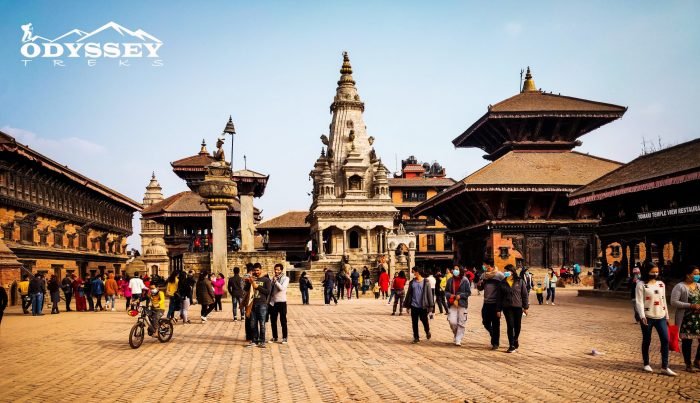
Bhaktapur Durbar Square is one of the important World Heritage Sites of Nepal listed by UNESCO, located in Bhaktapur. It is an ancient city located in the Kathmandu Valley, about 13 km east of the capital Kathmandu. Bhaktapur was once the capital of the Malla Empire. The city is known for its historical architecture, culture, and tradition.
This Durbar Square is a group of palaces, temples, and courtyards that were once the center of the ancient city of Bhaktapur. The site is famous for its rich history, impressive architecture, and cultural significance. Covering an area of 4 acres, the square consists of four distinct squares namely Durbar Square, Toumdhi Square, Dattatreya Square, and Pottery Square.
Notable Landmarks
Palace of 55 Windows, Golden Gate, Nyatapola Temple, etc. are some of the notable landmarks of the square. The palace of 55 windows was built in the 15th century during the reign of the Malla kings and served as the royal palace. The palace gets its name from its 55 windows that are carved with intricate woodwork.
The Golden Gate is a magnificent entrance to the palace with elaborate carvings of gods and goddesses. Nyatapola Temple is a five-storied pagoda-style temple famous for its intricate woodwork and stone carvings. The temple is the tallest building in Durbar Square and is dedicated to Goddess Siddhi Lakshmi. Bhairav Nath Temple is another notable temple in the square dedicated to Lord Bhairav.
Bhaktapur Durbar Square is a fascinating site that gives visitors a glimpse of Nepal’s rich cultural heritage and history. This UNESCO World Heritage Site attracts visitors from all over the world who come to admire its well-preserved historical architecture and cultural heritage. This site is a must-visit destination for anyone interested in the history and culture of Nepal.
Entry Fee: For SAARC Nationals and Chinese citizens Rs. 500 and for other tourists Rs. 1500.
Visit Also: Nepal Historical Tour in just 13 Days, Full Package, Itinerary
Patan Durbar Square
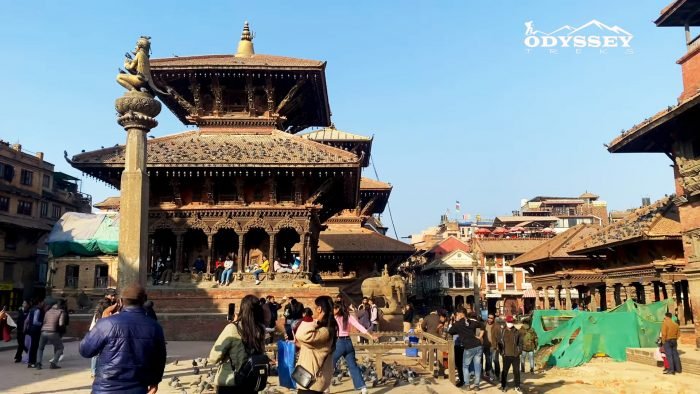
Patan Durbar Square is also one of the important UNESCO World Heritage Sites of Nepal. It is located in the city of Lalitpur in the Kathmandu Valley, also known as Patan. Patan Durbar Square is a site of important buildings and temples with Nepal’s religious and cultural history.
The site is the political and cultural center of the city of Patan with many temples, palaces, and other buildings built over the centuries. This site is one of the best examples of the traditional Newari architecture of Nepal. Listed as a UNESCO World Heritage Site, this square is considered one of the most important cultural and historical landmarks in Nepal.
This heritage site was expanded and developed during the Malla dynasty that ruled the Kathmandu Valley from the 12th to the 18th century. During that time Patan became a center of art, architecture, and religion. Apart from its religious and cultural significance, Darbar Square has played an important role in the political history of Nepal.
This palace was the site of many important ceremonies and rituals during the reign of the Malla kings and was also the place of the coronation of the kings. Its structures are important not only for their religious and historical significance but also for their unique architecture and artistry. It is an important destination for those interested in Nepal’s history, culture, and the beauty of traditional Newari architecture.
Highlights of Patan Durbar Square
Krishna Temple:
Krishna Mandir is one of the most famous and revered temples in the square. Built in the 17th century, this temple is dedicated to Lord Krishna, one of the major deities of Hinduism. The temple is built in the Shikhara style which is considered to be the best example of Newari architecture in Nepal. The temple is decorated with intricate carvings and sculptures depicting scenes from Lord Krishna’s life.
Sundari Chowk:
Sundari Chowk is one of the most famous and well-preserved courtyards inside the square which is considered to be the most beautiful and peaceful place. It is a popular destination for both tourists and locals.
Sundari Chowk was built in the 17th century and is named after the goddess Sundari, who is considered to be an incarnation of the Hindu goddess Parvati. The courtyard is surrounded by three-storied buildings with intricately carved windows and doors.
Bhimsen Temple:
Bhimsen Temple is also one of the most important and revered temples in Durbar Square. Built in the 17th century, this temple is dedicated to Bhimsen, a Hindu deity associated with trade and commerce. Especially merchants and traders come to this temple to pray and seek blessings for their businesses.
Located at the southeast corner of Durbar Square, this temple is built in the traditional Newari style of architecture. The three-storied temple is adorned with sculptures and carvings depicting scenes from Bhimsena’s life
Taleju Temple:
One of the important temples in Darbar Square is the Taleju Temple which is dedicated to Goddess Taleju. Taleju is considered to be an incarnation of the Hindu goddess Durga. Located on the northern side of Durbar Square, this temple is built in the traditional Newari style of architecture.
The three-storied temple is adorned with sculptures and carvings depicting scenes from Taleju’s life. The temple is open to the public only once a year during the Indrajatra in September.
Patan Museum:
It is a museum located within Durbar Square housed in a palace building built in the 17th century. Patan Museum is one of the best museums in Nepal. There are various exhibitions here that showcase the rich cultural heritage of the Kathmandu Valley. The museum has traditional Newari architecture, sculptures as well as rare religious and historical objects.
Golden Temple:
The Golden Temple is a famous Buddhist temple located within Patan Durbar Square. This temple is also known as Suvarna Mahavihar, which means “Golden Temple” in the Nepali language. The temple is believed to have been established in the 12th century and is one of the most important Buddhist temples in Nepal. Famous for its exquisite wood carvings and metalwork, the temple is dedicated to the Buddhist deity Avalokiteshvara.
Mul Chowk:
Mul Chowk is one of the most impressive courtyards in the square. This courtyard is located in the middle of the palace complex which is surrounded by many historical buildings. Built during the Malla reign, it is known for its stunning architecture and intricate wood carvings. The courtyard was once used for royal coronations and other state ceremonies.
Entry Fee: For SAARC Nationals Rs. 250 and for other tourists Rs. 1000.
You May Like: 10 Best Every Traveler Should Do in Nepal
Pashupatinath Temple
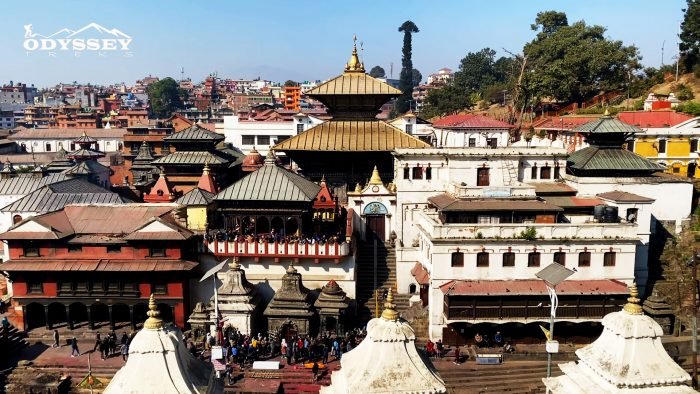
Pashupatinath Temple is a Hindu temple complex located on the banks of the Bagmati River in the city of Kathmandu. A UNESCO World Heritage Site, the temple is one of the most important pilgrimage sites for Hindus. The temple is dedicated to Lord Shiva, one of the major deities of Hinduism.
Covering an area of about 246 hectares, the temple complex includes more than 500 temples, shrines, and other structures. The main temple is built in pagoda style with a golden roof, four silver doors, and many intricate carvings and decorations. The temple is believed to have been built in the 5th century though the present structure was built in the 17th century.
Apart from the main temple, the complex also has other important shrines and structures dedicated to various deities and figures from Hindu mythology. The Pashupatinath temple complex is the site of many important festivals and events throughout the year.
Maha Shivratri festival which is the most important festival is celebrated in February or March. This festival attracts thousands of pilgrims from all over Nepal and India. The Bagmati river that flows alongside the temple is a sacred river for Hindus and is used for religious bathing and funeral rites.
Being a World Heritage Site and an important center of Hindu culture and tradition in the Kathmandu Valley, the temple attracts thousands of visitors and pilgrims every year. Although the 2015 earthquake suffered some damage, the temple has been restored and opened for visitors.
Entry Fee: Free for Indian citizens and for other tourists Rs. 1000.
You may like: Nepal Cultural Tour in just 12 days, Itinerary, Package, Price
Bouddhanath Stupa
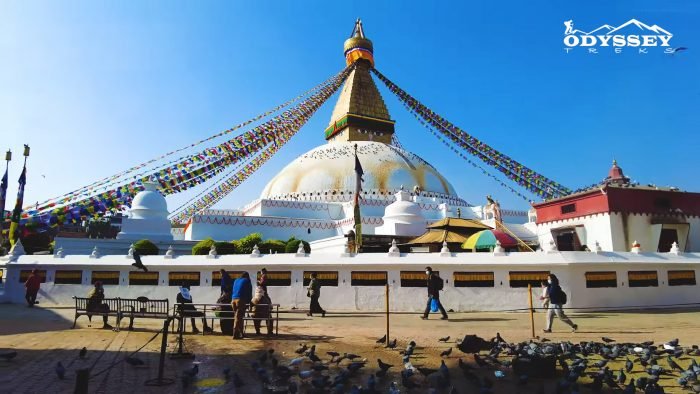
Boudhnath Stupa is one of the most important and iconic landmarks of Nepal. This UNESCO World Heritage Site is located in the northeastern part of Kathmandu and is considered to be one of the largest stupas in the world.
The stupa is said to have been built in the 5th century AD though the exact date of its construction is still unknown. It is believed to have been built by the Lichchavi dynasty that ruled Nepal in the 5th century.
Boudhanath Stupa is an important symbol of Nepal’s Buddhist culture and heritage, having been an active religious site for over 1,500 years. With its unique architecture, vibrant atmosphere, and historical significance, a stupa is truly a place worth visiting.
The stupa is a massive structure with a height of 36 meters and a diameter of over 100 meters. It is a sacred place for Buddhists as well as a cultural and social center. This stupa is also an important place of worship for Tibetan and Nepali Buddhists. Its beautiful architecture has made this place a popular tourist destination.
Every day locals and visitors come to walk clockwise around the stupa, spin prayer wheels, and recite mantras. Surrounded by shops, restaurants, and cafes, this makes it a lively and bustling place. Visitors can enjoy local food, drinks, and shopping while admiring the unique beauty of the stupa. Thousands of visitors come every year to learn about the stupa’s rich history and culture as well as explore the surrounding area.
Entry Fee: For SAARC Nationals Rs. 100 and for other tourists Rs. 400.
Swayambhunath Stupa
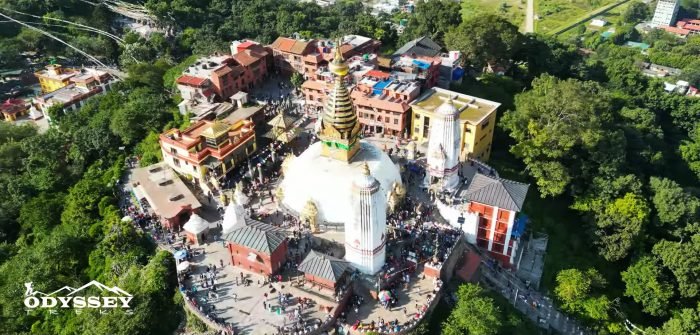
Swayambhunath Stupa is one of the historical UNESCO World Heritage Sites of Nepal, located on a small hill in Kathmandu. The site is also home to a large number of monkeys, hence it is also known as the Monkey Temple. It is one of the oldest and most important stupas in Nepal. The stupa is believed to have been built in the 5th century but the current structure dates back to the 14th century.
The stupa is a huge dome-shaped structure adorned with colorful prayer flags, prayer wheels, and intricate carvings. The base of the stupa is surrounded by prayer wheels. The stupa is also surrounded by many small temples and statues. One of the most iconic features of Swayambhunath is the pair of eyes which are considered symbols of all-seeing wisdom and compassion.
Swayambhunath Stupa is a remarkable site that gives a glimpse of Nepal’s rich religious, cultural, and historical heritage. Its architecture, art, and natural beauty make it a must-visit destination for anyone visiting Kathmandu. Swayambhunath is a site of religious significance for both Buddhists and Hindus and is also a popular tourist attraction. It is the holiest place for Buddhist pilgrimage.
Visitors can climb a steep staircase that leads up to the stupa at the top of the hill. It offers stunning views of Kathmandu city and the surrounding mountains. Apart from religious and cultural importance, it is also an ecological site. The hill on which the stupa is located is a small forest area that provides a home to a variety of bird species.
Entry Fee: For SAARC Nationals Rs. 50 and for other tourists Rs. 200.
Changu Narayan Temple
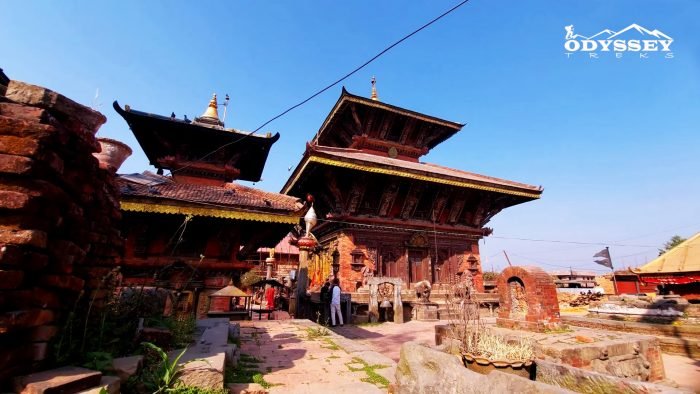
Changu Narayan Temple is one of the historical UNESCO World Heritage Sites of Nepal. This temple is located in Bhaktapur city of Kathmandu Valley. Changunarayan Temple is considered to be the oldest temple in Nepal. The temple is also one of the most important temples for Hindus in Nepal.
Believed to have been built during the Lichhavi period in the 4th century, this temple is dedicated to Lord Vishnu. Though built in the 4th century, the current structure dates back to the 17th century. It is a masterpiece of Newari architecture with intricate carvings, sculptures, and woodwork.
Located on top of a hill, this temple is surrounded by forest which provides a peaceful atmosphere to the visitors. Visitors can also climb the stone steps to reach the temple. There are many temples and statues in the temple complex. One of the most notable statues in the temple is the Garuda statue. The statue of Garuda is a half-man, half-eagle figure that is considered the vehicle of Lord Vishnu.
The temple is also home to a museum where visitors can learn about the architectural styles of the temple, as well as the religious, cultural, and historical practices associated with it. The temple is an important pilgrimage site for Hindus and visiting the temple is believed to bring good luck.
The temple’s rich history, stunning architecture, and cultural significance make it an important site. Its carvings are a testament to the enduring power of human creativity and artistic expression. It is also a popular tourist destination that thousands of visitors visit every year.
Entry Fee: For SAARC Nationals Rs. 100 and for other tourists Rs. 300.
Lumbini – The Birthplace of Lord Buddha
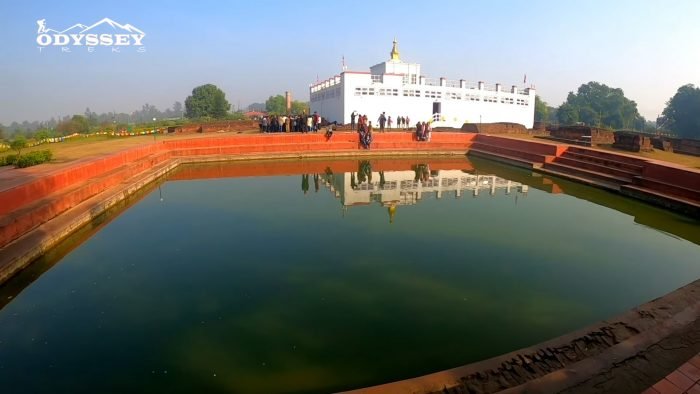
Lumbini is a sacred place with religious and historical importance in Nepal. It is located in the southern part of Nepal near the Indian border. In recognition of its cultural and historical importance, Lumbini was listed as a UNESCO World Heritage Site in 1997.
Being the birthplace of the historical Buddha Siddhartha Gautama, it is also one of the most important pilgrimage sites for Buddhists around the world. The history of Lumbini dates back to the 6th century BC when Gautama Buddha was born. Gautama Buddha was born into a royal family in 563 BC.
That place in Lumbini was known as Kapilavastu, which was the capital of the Shakya kingdom. Later Prince Siddhartha Gautama gave up his royal life and became a wandering ascetic in search of peace. The site of Lumbini was rediscovered by archaeologists in the late 19th century and identified as the birthplace of Buddha.
Excavations in the early 20th century uncovered artifacts including the remains of a brick and wooden structure at the site of Buddha’s birth. Maya Devi Temple, built at the birthplace of Buddha, has now become a major attraction for tourists visiting Lumbini.
Sacred garden and Ahoka Pillar
The sacred garden is a peaceful and beautiful garden occupying a large part of the Lumbini site. The garden is full of beautiful flowers, trees, and ponds which are a great place to meditate. The Ashoka Pillar is another important landmark of Lumbini, built by the Indian emperor Ashoka in 249 BC. The pillar is made of sandstone and its inscriptions provide important historical information about the site.
Lumbini has many temples, monasteries, and other religious and cultural institutions built by Buddhist communities from around the world. Each monastery and temple have a unique architecture and design that provides a glimpse into the different cultural traditions of Buddhism. Apart from its religious and cultural significance, the site is also an important site for archaeological research.
Entry Fee: For SAARC Nationals Rs. 100 and for other tourists Rs. 200.
Visit also: Nepal Pilgrimage Tour – 10 days, Detail itinerary, Full package
Sagarmatha National Park

Another UNESCO World Heritage Site in Nepal is Sagarmatha National Park which is located in the northeastern part of the country. The park is named after the world’s highest peak, Everest, which is called Sagarmatha in Nepali. Covering an area of 1,148 square kilometers, the park was established in 1976.
The park was listed as a UNESCO World Heritage Site in 1979 due to its unique natural beauty and importance in conserving the Himalayan ecosystem. It is also listed because of its cultural significance as the home of the Sherpa tribe known for their mountaineering skills.
The park is home to a variety of flora and fauna and is an important conservation area in Nepal. The park preserves many rare and endangered species such as snow leopard and Himalayan black bear, as well as important medicinal plants. Located in the Himalayan region, this park is the highest park in the world. The park includes the world’s highest peak, Mount Everest, as well as peaks over 8000 meters such as Lhotse and Cho Oyu.
Sagarmatha National Park is a popular trekking destination for trekkers from all over the world and thousands of trekkers visit every year. The park has many trekking routes of different levels and the most popular trek among them is the Everest Base Camp Trek.
The Everest Base Camp Trek offers panoramic views of the mountain range including Mount Everest and takes 2 weeks to complete. Sagarmatha National Park is a unique and spectacular UNESCO World Heritage Site that is a must-visit destination for anyone who wants to experience the majesty of Mount Everest and the Himalayas.
Entry Fee: For SAARC Nationals Rs. 1695 and for other tourists Rs. 3390.
Chitwan National Park

Chitwan National Park is another UNESCO World Heritage Site of Nepal located in the southern part of the country. Covering an area of 932 square kilometers, this park was established in 1973. The park was listed as a World Heritage Site in 1984 for its outstanding natural value and its role in the conservation of endangered species, particularly the one-horned rhinoceros.
It is home to a variety of flora and fauna with more than 700 species of wildlife including endangered species such as the Bengal tiger, the one-horned rhinoceros, and the Gharial crocodile. The park is also home to over 500 species of birds. The park is also home to over 500 species of birds. There are also various important medicinal plants used in traditional Nepali medicine.
Located in the subtropical Terai region, the park includes the floodplains of the Rapti, Reu, and Narayani rivers and the Churia hills. Chitwan National Park is one of the popular tourist destinations in Nepal as it is known for its diverse wildlife and natural beauty.
Due to its popularity as a tourist destination, thousands of tourists visit the park every year. Visitors can enjoy activities like jungle safaris, elephant rides, bird watching, and nature walks in the park.
Experience the Tharu culture
The Tharu community is indigenous to this area so visitors can also get an opportunity to stay with Tharu families and experience their traditional lifestyle. Also in the evening cultural programs of traditional Tharu dance and music performances can be experienced in nearby Tharu villages or lodges.
Visitors can take a canoe ride on the Rapti River to observe aquatic birds, crocodiles, and other wildlife. It is an excellent destination for nature lovers, adventurers, and anyone who wants to experience the wildlife and natural beauty of Nepal.
Entry Fee: For SAARC Nationals Rs. 1000 and for other tourists Rs. 2000.
Visit also: All Nepal Tour in 15 Days, Cultural, Historical, Pilgrimage, Heritage

